Fujian, abbreviated as “Min,” is a coastal province in southeastern China. Sitting across the Taiwan Strait, it’s one of China’s key gateways for international trade and cultural exchange. The provincial capital, Fuzhou, boasts over 2,000 years of history, while Xiamen is well-known for its scenic beaches and colonial architecture. Other cities like Quanzhou, Zhangzhou, and Putian offer their own unique charm, making Fujian a destination rich in both culture and natural beauty.
With its mountainous landscape and a deeply indented coastline, Fujian offers diverse scenery—from dramatic peaks to tropical islands. Thanks to its long maritime history, it’s also home to significant historical landmarks. Whether you’re exploring UNESCO heritage sites or relaxing on sunlit beaches, Fujian blends traditional culture with modern vibrancy.

Fujian comprises nine major cities, each with distinct characteristics. Whether you’re interested in ancient temples, coastal walks, or authentic local cuisine, there’s something for every traveler.
Fuzhou, Xiamen, and Quanzhou are the most popular destinations. However, cities like Zhangzhou, Putian, Longyan, Nanping, Sanming, and Ningde are also worth your time if you’re looking to go beyond the usual tourist paths.
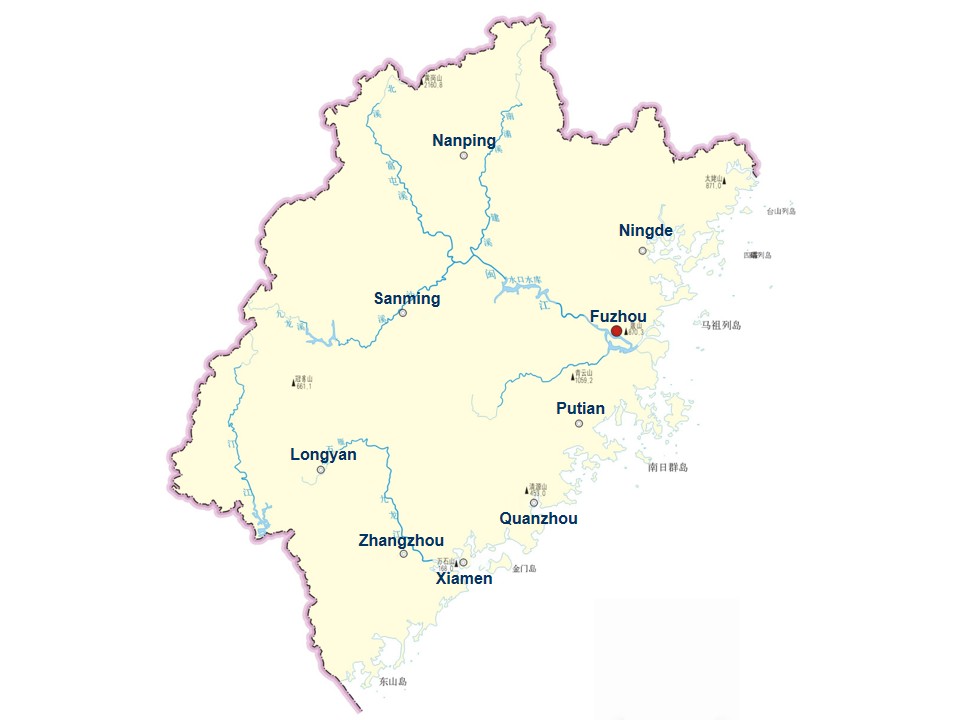

A romantic coastal city famous for Gulangyu Island, Xiamen blends southern Chinese architecture with colonial flair. Its laid-back vibe and seaside promenades make it a top choice for vacations.
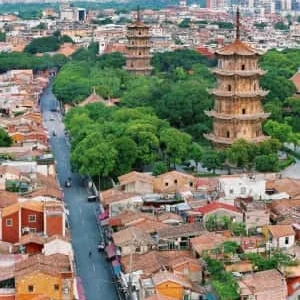
Once the starting point of the Maritime Silk Road, Quanzhou showcases a rich blend of religious and architectural styles, from Buddhist temples to Islamic mosques and Hindu relics.
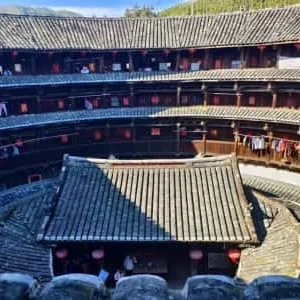
Known for its fertile lands and abundant agriculture, Zhangzhou features attractions like Dongshan Island, volcanic parks, and some of the best-preserved Fujian Tulou (earthen buildings).
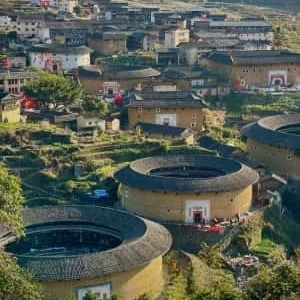
This mountainous region is a center of Hakka culture. Don’t miss the Yongding Tulou and the ancient town of Changting.
Fujian is ideal for both cultural immersion and outdoor adventures. The province offers everything from world heritage sites and religious sanctuaries to peaceful islands and mountain hikes.
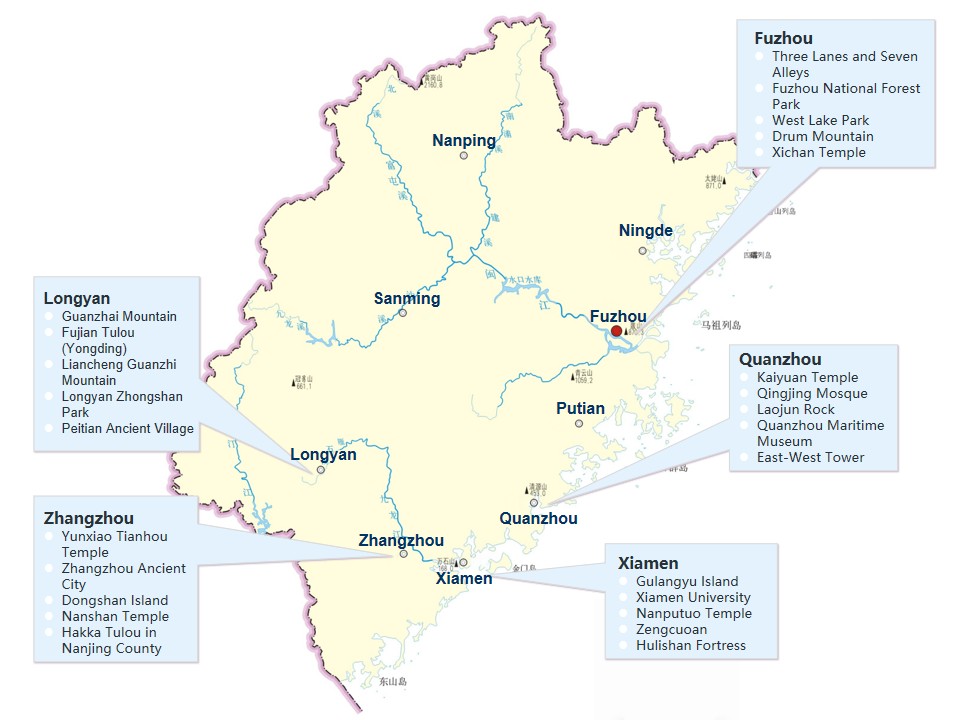
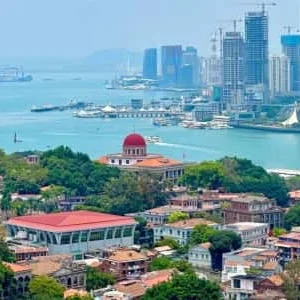
A UNESCO World Heritage Site, Gulangyu is known for its colonial architecture and musical heritage. No cars are allowed, adding to the island’s peaceful charm.
-300x300.webp)
Recognized by UNESCO for both its natural and cultural significance, the Wuyi Mountains are famous for their dramatic cliffs, clear rivers, and ancient Taoist sites.

This well-preserved district features traditional residential compounds, offering a glimpse into life during the Ming and Qing dynasties.
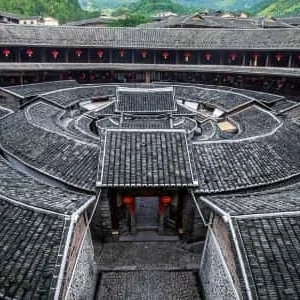
These massive, circular earthen buildings were designed by the Hakka people. They’re practical, earthquake-resistant, and incredibly photogenic.
-300x300.webp)
One of the largest ancient temples in China, this site combines Buddhist, Islamic, and Hindu elements—a rare convergence of global religions.
-300x300.webp)
The birthplace of the sea goddess Mazu, Meizhou Island attracts both pilgrims and beach lovers.
-300x300.webp)
Known as “a fairyland on the sea,” Taimu offers bizarre rock formations, cloud forests, and breathtaking coastal views.
Fujian cuisine—one of China’s eight major culinary traditions—is known for its delicate flavors, seafood ingredients, and flavorful broths. Each region within Fujian brings its own twist to the table.
-300x300.webp)
A luxurious stew made from abalone, sea cucumber, scallops, and more. The dish symbolizes wealth and celebration.
-300x300.webp)
A spicy, peanutty noodle soup made with satay sauce and often topped with shrimp, beef, or tofu.
-300x300.webp)
A chilled jelly dish made from marine animals, eaten cold and paired with vinegar or soy sauce. It's an acquired but unforgettable taste.
-300x300.webp)
Known locally as “Lu Mian,” these thick noodles are simmered in a rich, umami broth with pork, tofu, and vegetables.
-300x300.webp)
These glutinous rice balls have a unique meat-based wrapper and a juicy pork filling. They’re typically served in clear soup.
-300x300.webp)
A baked flatbread with a chewy texture. It's often sliced and stuffed with savory fillings—perfect as a street snack.
Fujian covers approximately 121,400 square kilometers and is home to about 42 million residents. Below are the area and population statistics for each major city (as of 2023):
Fuzhou: 11,968 km², 8.4 million
Xiamen: 1,700 km², 5.3 million
Quanzhou: 11,015 km², 8.8 million
Zhangzhou: 12,305 km², 5.1 million
Putian: 4,119 km², 3.2 million
Nanping: 26,378 km², 2.5 million
Longyan: 19,029 km², 2.5 million
Ningde: 13,452 km², 3.0 million
Sanming: 22,928 km², 2.4 million
Note: These figures are estimates based on recent reports and may slightly vary over time.
Fujian has a subtropical monsoon climate. Winters are mild, and summers are hot and humid. Coastal cities tend to be warmer, while mountain regions offer cooler conditions.
January: Coolest month, 7–15°C (light frost in mountains)
February: Still chilly, 9–17°C (early signs of spring)
March: Mild and pleasant, 13–21°C (great for flower viewing)
April: Warm spring days, 17–26°C (occasional rain)
May: Humid and warm, 21–29°C (lush scenery)
June: Rainy season begins, 24–31°C (high humidity)
July: Hottest month, 26–34°C (watch for typhoons)
August: Hot and humid, 26–33°C (afternoon storms common)
September: Cooler and stable, 24–31°C (great for sightseeing)
October: Dry and clear, 20–28°C (ideal for travel)
November: Crisp air, 15–24°C (light jacket weather)
December: Mild winter, 10–18°C (mostly dry)
▶ Best time to visit Fujian: March–May (spring) and September–November (autumn) for the best weather and fewer crowds.
Here’s a quick reference for Fujian’s major cities:
Fuzhou: Zip 350000, Area Code 0591
Xiamen: Zip 361000, Area Code 0592
Quanzhou: Zip 362000, Area Code 0595
Zhangzhou: Zip 363000, Area Code 0596
Putian: Zip 351100, Area Code 0594
Nanping: Zip 353000, Area Code 0599
Longyan: Zip 364000, Area Code 0597
Ningde: Zip 352100, Area Code 0593
Sanming: Zip 365000, Area Code 0598

 English (Malaysia)
English (Malaysia)